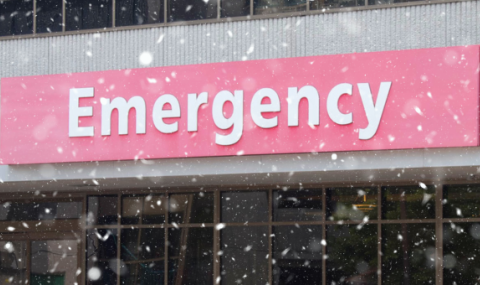Because hospitals care for patients with a variety of serious problems, including infections, bacteria and viruses are present in all hospitals. Critically ill patients have a number of reasons why they are more susceptible to infection, therefore, all visitors and health care providers must help to prevent the spread of infections.
Most germs are spread on the hands of people who have touched a patient or a patient's bed or bedside area. Although it is very rare for a healthy family member to contract an illness from a patient, visitors can spread germs to the waiting room, that can be carried to patients or other areas.
Hand Hygiene
Hand hygiene is a term used to describe hand cleaning for the purpose of removing germs. All visitors and health care providers must practice good hand hygiene before AND after leaving a patient's bedside. Hands should be cleansed as you exit the patient's room, before you touch door handles or other objects.
Unless your hands are visibly soiled, the best way to clean your hands is by using a waterless alcohol-based hand cleanser. Dispensers are located at every bedside, and at various locations throughout CCTC.
Techniques for Hand Hygiene using Soap and Water:
- Wet hands with warm water
- Apply 1 or 2 pumps of soap
- Rub hands together vigorously for at least 15 seconds to lather the soap and cover all surfaces of hands
- Pay attention to finger tips, between fingers, backs of hands and base of thumbs
- Thoroughly rinse soap from hands
- Blot hands gently with paper towel
- Dry thoroughly
- Use paper towel to turn off faucet
Alcohol-based Hand Rub:
- Ensure hands are visibly clean (if soiled, use soap and water first)
- Apply 1 or 2 full pumps of product to palm of hand
- Spread over all surfaces of hands and fingers
- Pay attention to finger tips, between fingers, backs of hands and base of thumbs
- Rub hands together until product is dry*. This will take 15-20 seconds if sufficient product is used.
Hands must be fully dry before touching the patient or patient’s equipment.
Isolation Precautions
Occasionally, patients may be placed on isolation precautions. Some germs are spread by touching a contaminated item, while others are spread by coughing and spraying infected droplets into the air (such as the common cold). There are different types of isolation, depending upon the way that a germ is spread. If a patient is on isolation, the nurse at the bedside will tell you the type of precautions that need to be taken. The most important precaution is always to practice good hand hygiene.
What if you or other visitors are sick?
If you or other family members are sick, you should avoid coming to the hospital. Even if you stay in the waiting room, you can spread germs to other visitors, who may infect other critically ill patients. If you are unsure of whether it is safe for you to visit, please check with the bedside nurse before you come to the hospital.
Remind others to practice hand hygiene.
If you notice that someone has come in contact with a patient without practicing hand hygiene, you are encouraged to remind them.
Environmental Cleaning
Each bed, bedside area and medical equipment is thoroughly cleaned after each patient use or discharge. If you have any concerns about the cleanliness of the environment, please speak to the Charge Nurse or Coordinator at extension 54990 or 53328.
Tell me about Quality and Safety.
What is Medication Reconciliation?



